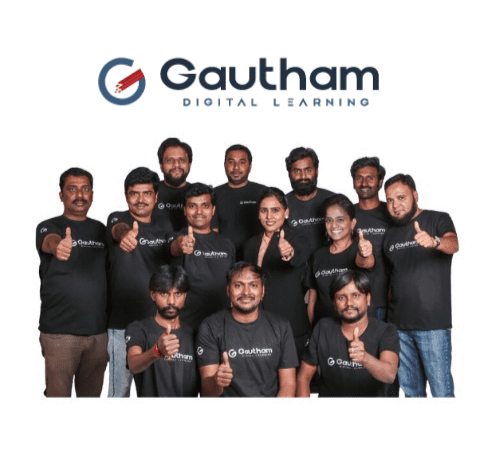Java Full Stack Developer Course
Master Java web development from back-end to microservices! Our Java Full Stack Developer Course equips you with Core Java, Advanced Java, Spring, Spring Boot, and microservices architecture. Build scalable applications and tackle real-world challenges with confidence.
About Java Full Stack Developer Course
Java Full-Stack Developer Course: Mastering the Art of Java Development
Are you aspiring to become a proficient Java full-stack developer? Look no further! Our comprehensive Java full-stack developer course is designed to equip you with all the necessary skills and knowledge to excel in the dynamic world of software development. From mastering core Java concepts to delving into advanced frameworks like Spring and Spring Boot, along with understanding microservices architecture, our course covers it all.
Understanding Core Java: Core Java forms the foundation of Java programming. It is essential to grasp the fundamental concepts of Java, such as object-oriented programming, inheritance, polymorphism, and exception handling. Our course ensures that you have a solid understanding of core Java, setting a strong base for your journey into advanced Java development.
Exploring Advanced Java: Once you have a firm grasp of core Java, it’s time to explore the realm of advanced Java. Advanced Java covers topics like servlets, JSP, JDBC, and more. You’ll learn how to develop dynamic web applications and interact with databases using Java technologies. With hands-on exercises and projects, you’ll gain practical experience in building robust Java applications.
Mastering Spring Framework: The Spring framework has become indispensable in Java development and is known for its modularity, flexibility, and ease of integration. In our course, you’ll delve into the various modules of the Spring framework, including Spring Core, Spring MVC, Spring Security, and Spring Data. You’ll understand how to leverage Spring’s features to develop scalable and maintainable applications.
Embracing Spring Boot: Spring Boot revolutionized the way Java applications are built and deployed. With its convention-over-configuration approach, Spring Boot simplifies the development process, allowing developers to focus more on business logic and less on boilerplate code. You’ll learn how to create standalone, production-ready Spring applications effortlessly with Spring Boot.
Diving into Microservices Architecture: In today’s era of cloud-native applications, microservices architecture has gained immense popularity due to its scalability, resilience, and agility. Our course introduces you to the principles of microservices and teaches you how to design, develop, and deploy microservices-based applications using Java technologies.
Front End Development
HTML: The Foundation Imagine HTML as the blueprint of a website. It defines the structure and content using building blocks called tags. These tags instruct the browser on how to display elements like headings, paragraphs, images, and more.
CSS: Adding Style and Flair Think of CSS as the interior designer of your website. It controls the visual aspects like colors, fonts, layout, and spacing. By applying CSS styles, you can transform a basic structure into a visually appealing and engaging user experience.
JavaScript: Bringing it All Together JavaScript is the spark that injects interactivity into your website. It allows elements to respond to user actions, create animations, and make web pages more dynamic. JavaScript interacts with both HTML and CSS to create a seamless user experience.
ReactJS: Building UIs Efficiently ReactJS is a powerful tool for front-end developers, especially when building complex user interfaces. It uses reusable components, a virtual representation of the DOM (Document Object Model), and a one-way data flow to simplify development and improve performance. Imagine ReactJS as pre-fabricated building blocks that can be assembled to create intricate and dynamic web applications.
SQL
SQL (Structured Query Language) is the powerful language behind relational databases. It lets you create structures (schema), query and manipulate data, and efficiently retrieve information – essential for software development, data analysis, and business intelligence.
Do you need to interact with relational databases? SQL (Structured Query Language) is your key! This versatile language lets you define how data is stored (schema), query for specific information, and even add, update, or delete records. It’s a foundational skill for software development, data analysis, and business intelligence.
Course Highlights
5 Months Duration
Comprehensive course over 5 months duration
Online Classes
By online your can attend our classes where ever you are.
Daily Assignments
Regular practice for better retention.
Practice Quizzes
To test your knowledge.
Life time LMS Access
We provide recordings of our classes with lifetime access.
Resume Building
Craft a standout resume.
Request More Information
For more details and demo links please call +91 9014529858 or WhatsApp us
Course Curriculum
Back End Development
- Introduction to Operating System
- Introduction to Programming Language
- Java Programming Language Introduction
- Writing First Java Program
- What is JDK, JRE, JVM
- Features of Java Programming Language
- Class
- Object
- Variables
- Datatypes
- Methods/Functions
- Eclipse Setup
- String class and Methods
- Comments In Java
- Multiple Classes and in single java source file
- keywords in java
- Packages
- Interactive programs in java using Scanner class
- Naming Conventions followed in Java
- Operators
- Control Statements
- Constructors
- Arrays
- Object Oriented Programming Principles
- Wrapper Classes
- Autoboxing and Unboxing
- Object Class and Methods
- Type Casting & instanceOf Operator
- Exception Handling
- Collections API / Framework
- Multi-Threading
- Java I/O (Input and Output) Streams
- Java Date and Time API
- Annotations
- Miscellaneous
- Introduction to JAVA EE
- JDBC API
- Servlets API
- Spring Framework
- SpringBoot
- REST API Services with Spring/Spring Boot
- Microservices
- Introduction
- Core Module with Spring
- Implementation of Core Module with Spring Boot
- JDBC/ORM/JPA Module
- MVC Module
- Development TOOLS
- Micro Services
- Miscellaneous
Front End Development
- Introduction to Web Development
- Introduction to HTML
- HTML Elements
- Anchors and Hyperlinks
- Lists
- Image
- Tables
- Forms
- Making up computer code
- Media Elements
- Grouping elements
- Section elements
- Global Attributes
- Linking Resources
- Embedding content
- Element Display behavior
- Introduction to CSS
- Selectors
- Combinators
- Essential CSS Knowledge for All
- Colors
- Typography
- Backgrounds
- Box Model
- Padding
- Margin
- Border
- Outlines
- Overflow
- Pseudo-elements
- Float
- Positioning
- Display
- Flex Box
- Grid Box
- Units
- Responsive Design
- Transform
- Animations
- Transition
- Functions
- Bonus topics
- Introduction to JS (Java Script)
- Variables
- Lexical Structure
- Data Types
- Type Conversions
- Operators
- Conditions
- Loops
- Strings
- Objects
- Arrays
- Functions
- OOP (Object-Oriented Programming)
- Asynchronous
- Error Handling
- Web Storage
- Bonus Topics
- Introduction to ReactJS
- Components
- Props (properties)
- Styling Components
- State (useState)
- Forms and Userinput
- How React Works behind the screen (Theory)
- useEffect (Side Effect)
- UseReducer (state management Hook)
- Ref and Portals (Hooks)
- React Router SPA(single page applications)
- React Router with Data Loading
- Context API (advanced state management hook)
- Redux
- Redux Toolkit
- React Query (Managing Remote State)
- Deployment
- Bonus Topics
Database
- Introduction to CSS
- Creating Database
- Creating Tables
- Data Types
- INSERT
- SELECT
- Comparison Operators
- Logical Operators
- Aggregate Functions
- Update and Delete
- Joins
For more details and demo links please call +91 9392105004 or WhatsApp us
How to Learn Java Full Stack?
To learn Java full-stack, you need to master front-end and rear-end technologies as well as databases and microservices. This is how you have to learn Java full stack.
1. Core Java
Core Java is the basis of all Java Programming. Understanding:
- Basic Syntax: Variables, data types, operators, control statements (if-else, switch-case).
- Object Oriented Programming Objects, classes, inheritance, polymorphism and abstraction.
- Collections Framework : Lists and sets, maps and their implementations.
- Handling Exceptions : Try-catch blocks and custom exceptions.
- Java I/O: Understanding input/output streams.
It is important to have a solid foundation before moving on.
2. Advanced Java
After you’ve mastered Core Java, move on to Advanced Java which includes:
- Java Enterprise Edition : Learn how to build web applications using Servlets (JavaServer Pages).
- Frameworks: Get to know popular frameworks such as Spring and Hibernate. Spring offers features to build robust applications while Hibernate simplifies the database interaction.
- Design Patterns: Understand common design patterns such as Singleton, Factory, and MVC (Model-View-Controller).
This phase prepares you for the back-end development of enterprise-level applications by providing tools, methodologies and techniques used in these applications.
3. Front-End Technologies
After mastering Core Java concepts and Advanced Java technologies, you can now focus on Front End Technologies which includes:
- HTML/CSS : The foundation of web pages. HTML structures the content, while CSS styles it.
- JavaScript is essential for adding interactivity and functionality to your web pages. ES6 includes arrow functions, promises and more.
- Front-End Frameworks/Libraries: Familiarize yourself with frameworks like React.js or Angular. These tools are useful for creating dynamic user interfaces.
Front-end technologies are critical to your application because they interact directly with the user interface.
4. Back-End development
After gaining a solid foundation in Core/Advanced Java, and Front-End technologies, you will dive into Back-End development , with a focus on:
- RESTful services/APIs – Learn how to build RESTful APIs with Spring Boot and similar frameworks. Understanding HTTP methods and status codes (GET, POST PUT DELETE).
- Microservices Architecture: Learn how to create applications that are a collection loosely coupled services which communicate via APIs. Understanding service discovery tools such as Eureka and Consul is important.
The back-end is responsible for the application’s data processing and business logic.
5. Database Management
The next step is to learn about databases.
- SQL Databases: Begin with relational databases such as MySQL or PostgreSQL. SQL queries are used to perform CRUD functions.
- NoSQL databases: MongoDB is a NoSQL database that can be used to store unstructured data.
A good understanding of databases will help you store application data efficiently.
6. Microservices
Lastly, you can deepen your understanding about microservices by reading this:
- Learn about containerization using Docker to deploy microservices quickly.
- Learn how to manage containerized applications using orchestration tools such as Kubernetes.
Microservices allows you to create scalable applications which different teams can independently develop.
Master Core Java before moving on to Advanced Java. You can learn both front-end and back-end technologies simultaneously. After you have mastered back-end programming, move onto databases and then microservices.
Career Opportunities for Java Full Stack Developers
As a Java full-stack developer, your skills will be in demand across a wide range of industries. Whether it’s fintech, e-commerce, healthcare, or entertainment, your ability to create robust, scalable applications will be invaluable. You’ll be equally sought after by start-ups looking to establish their digital presence and established corporations aiming to modernize their systems.
As a skilled full-stack developer, you can pursue roles such as:
- Java Developer: Specializes in building robust backend systems using Java.
- Full Stack Developer: Handle front-end and backend development, creating complete web applications.
- Software Engineer: Work on complex software solutions, from design to deployment.
- Web Developer: Focus on building and maintaining websites and web applications.
- System Analyst: Analyze and design IT solutions to meet business needs.
These roles are not just in high demand, they also offer abundant opportunities for growth and advancement. With your training in Java, Spring Boot, Angular, React, and more, you’ll be well-prepared to excel in these positions and contribute to the development of cutting-edge technology solutions.
What is the difference between the MEAN and MERN stack?

The choice of front-end framework is the main difference between both stacks.
- MEAN is based on Angular.js. This JavaScript framework allows for the creation of single-page apps (SPAs).
- MERN uses React.js to build reusable UI components.
There are also:
- Learning curve: MERN’s React.js is more complex due to its component-based architecture. Angular.js, on the other hand, has a framework with built-in features.
- MEAN’s Angular.js is more productive due to its extensive features and tools. It is also suitable for large-scale applications. MERN’s React.js is more complex to configure and set up but offers greater customization and flexibility.
- MEAN is more popular due to its ease of use and simplicity. MERN has a smaller community.
- Scalability: While both stacks are scalable and can be used for large applications, MEAN’s Angular.js works better for smaller applications requiring rapid development.
The choice between MEAN or MERN is based on your project’s specific needs, your team’s expertise, and how fast you want to develop. MEAN is best suited for large-scale applications that require productivity. MERN, on the other hand, is better suited for smaller applications and those requiring rapid development.










Frequently Asked Questions
A Full Stack Java Developer course covers both frontend and backend development using Java. Students learn to build entire web applications, including UI/UX design (frontend), business logic (backend), and database management.
Start by learning core Java and advanced java, then move on to frontend technologies like HTML, CSS, and JavaScript. Next, study backend frameworks like Spring Boot and databases like MySQL.
Yes, it’s possible to learn the basics of full stack development in 3 months if you dedicate sufficient time each day. However, becoming proficient may take longer depending on your learning pace and prior experience.
Yes, Java is highly regarded for full stack development due to its robustness, scalability, and large ecosystem of tools and libraries that support both frontend and backend development.
Java can be challenging for beginners due to its syntax and concepts like object-oriented programming. However, with consistent effort, it becomes easier as you gain experience.
There is no single “best” full stack developer. It depends on the project requirements. Java full stack developers are great for enterprise applications, while MEAN (MongoDB, Express.js, Angular, Node.js) or MERN (MongoDB, Express.js, React, Node.js) stacks are popular for web applications.
Skills include proficiency in Java, JavaScript, HTML, CSS, front-end frameworks (e.g., Angular or React), back-end development (Spring, Hibernate), databases (MySQL, PostgreSQL), and version control (Git).
Each has its advantages. Java is great for enterprise-level applications, Python is ideal for data science and automation, and JavaScript excels in front-end development.
It can be challenging due to the need to master both frontend and backend technologies, but with dedication and practice, it becomes easier.
Yes, Java full stack developers are in high demand due to the widespread use of Java in enterprise applications.
Yes, it’s a lucrative and versatile career with strong demand in the job market.
Fee structure for Java full stack developer course is ₹15,000/-
Yes, Java full stack developers typically earn high salaries, particularly in enterprise development roles.
Typically, a degree in computer science or related fields is preferred, along with hands-on experience in both Java and web development.
Our Courses
A full-stack Python developer utilizes both the front-end and back-end components of web applications.
ServiceNow training equips you with the skills to manage IT service requests, incidents, and changes using the ServiceNow platform.
AWS DevOps integrates various aspects of software development and operations, aiming to shorten development life cycle.
Linux administration training teaches you how to install, configure, and maintain Linux operating system.
Salesforce training empowers you with the skills needed to become proficient in the world's leading CRM system.
Mulesoft provides software that connects applications, data, and devices that automate tasks and integrate various systems.
Digital marketing uses search engines and social media channels to connect with customers and promote products or services.














